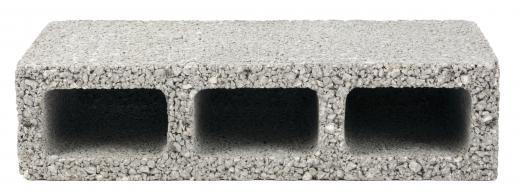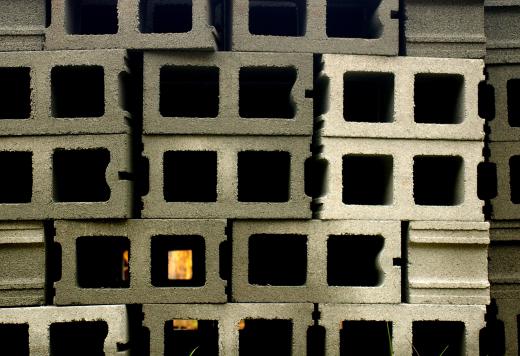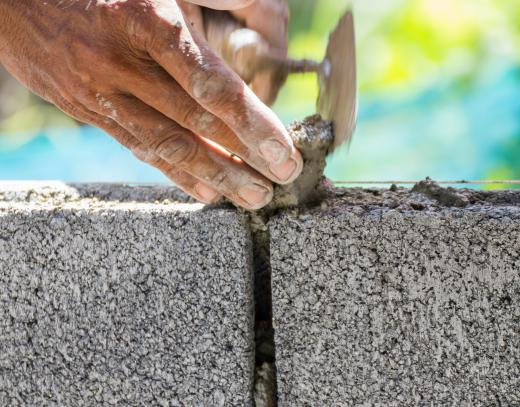A breeze block is a concrete block that has been made with a blend of concrete and ash. Other types of concrete blocks may be used with clinker, sand, or gravel as fillers, but in some regions of the world, these blocks are referred to generically as “breeze blocks,” whether or not ash is present. They can be used in a variety of construction projects and tasks.
Concrete masonry units, as they are more formally known, can be made in a variety of densities and weights, depending on the fillers used. High density blocks are used in construction to create supportive and load-bearing features, such as walls and foundations. Lower density blocks may be used to make garden walls and various other non-structural features, including the famously cheap shelving made from concrete blocks and lengths of wood by college students around the world.

These blocks may also be referred to as foundation, cinder, or cement blocks, regardless of the fillers used. The term “breeze block” is most commonly used in Great Britain and nations where British English is spoken, as “breeze” is used to mean “ash” or “cinders.” People outside of these regions may refer to them as cinder blocks.
The breeze block design is relatively lightweight, making such blocks unsuitable for bearing substantial or heavy loads. The design also means that these blocks also weigh much less than denser blocks, which can make them easier to handle. Typically, they have hollow sections that are designed to make them even lighter and easier to work with, and these sections also confer insulating properties on the finished block, because the air in the spaces acts as an excellent insulator.

When the blocks are used to build a structure, they are laid in overlapping courses or layers that distribute the weight of the blocks and create a more aesthetically interesting finished structure. The structure can be cemented together with the use of various mortars, and they may be supported internally with rebar or other supportive stakes and posts that keep the blocks in place, lend them structural stability, and increase their rigidity.

Many home supply and construction stores carry breeze blocks, usually in classic concrete gray, although specially dyed and prepared blocks are also available. People should be aware that although an individual block is fairly light, a large load can add up to a lot of weight, which can make them cumbersome or challenging to handle.
Ever since she began contributing to the site several years ago, Mary has embraced the exciting challenge of being a About Mechanics researcher and writer. Mary has a liberal arts degree from Goddard College and spends her free time reading, cooking, and exploring the great outdoors.

